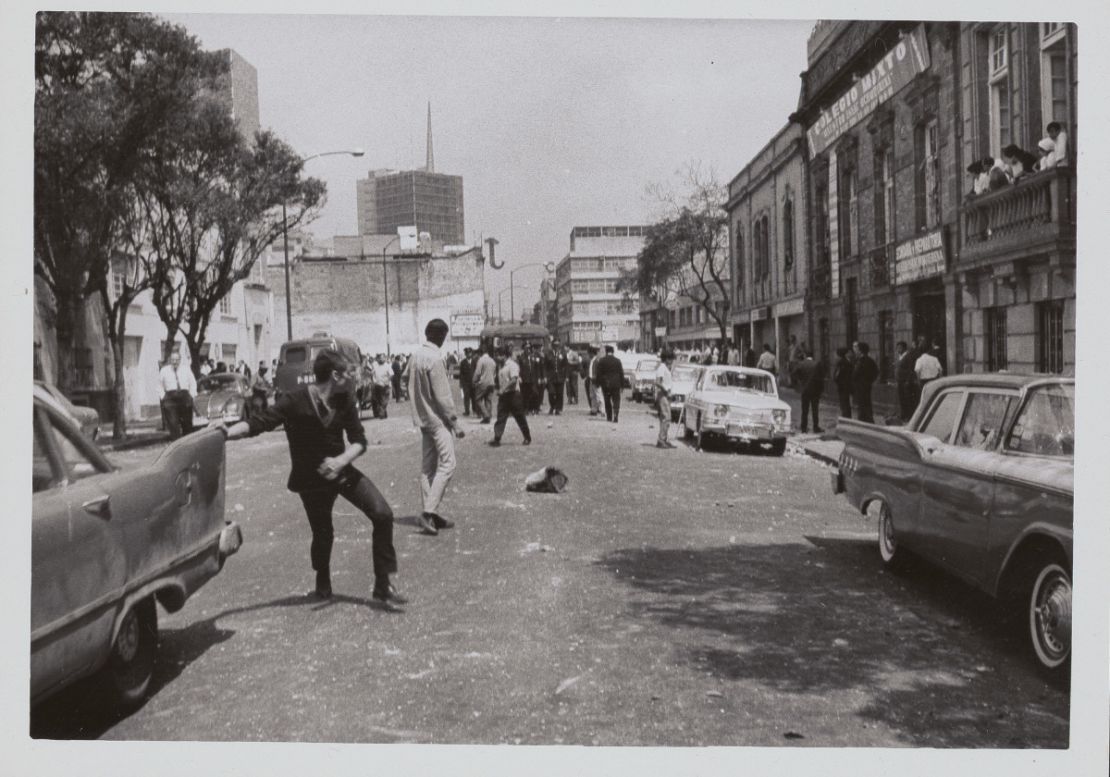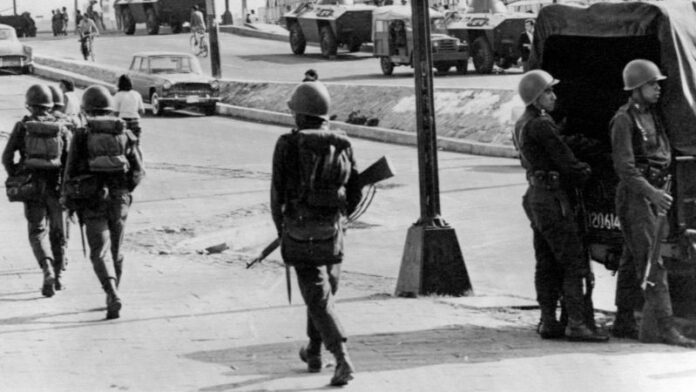(CNN Spanish) – On October 2, 1968, one of the most remembered tragedies in the contemporary history of Mexico occurred: the Tlatelolco student massacre.
That day, thousands of people—mainly students, but also teachers, mothers, fathers, children and workers—gathered in the Plaza de las Tres Culturas, located in the Tlatelolco neighborhood, near the center of Mexico City, to perform a demonstration with several demands, according to accounts from the National Autonomous University of Mexico (UNAM) and the National Human Rights Commission (CNDH).
The demands were six, explains the CNDH:
- Freedom of all political prisoners
- Repeal of article 145 of the Federal Penal Code (which established the crime of “social dissolution”)
- Disappearance of the Grenadier Corps
- Dismissal of police chiefs
- Compensation to the families of all those killed and injured since the beginning of the conflict
- Demarcation of responsibilities of the officials guilty of the bloody events
Before 6 pm, when the demonstration was about to end, a helicopter flew over the Plaza de las Tres Culturas and flares were launched from it, which was the signal from the Government of Gustavo Díaz Ordaz to attack those attending the protest. , mentions the CNDH.
Members of the paramilitary group known as the Olimpia Battalion —whose members dressed as civilians and wore a white glove to identify themselves— and also elements of the Mexican Army shot at the crowd gathered in the square.
The UNAM indicates that, after the flares launched from the helicopter, the snipers of the Olimpia Battalion, who had previously infiltrated the Chihuahua building –located at the head of the Plaza de las Tres Culturas–, began shooting against the protesters and also against the elements of the Army. These, thinking that they were being attacked by students, began shooting at those attending the protest, adds the educational institution.
What is clear is that the Díaz Ordaz Government ordered the attack: “The military and the Olimpia Battalion had orders to shoot against the young people,” as pointed out the Government of Mexico.
In the midst of the chaos in Tlatelolco, many ran to hide in the buildings in the plaza; However, the military entered without a court order to arrest them and take them away.
To date, the exact toll of the massacre is not known. The figures vary: while some versions speak of 25 fatalities, others place the total number of people murdered above 300. Likewise, some estimates indicate that there were 700 injured and more than 5,000 detained.
The student movement of 1968 has similarities with other educational movements in other parts of the world, such as France and the United States, where its members demanded an end to repression by security forces and respect for freedoms, according to the National Institute of Anthropology and History of Mexico (INAH).
“In 1968, the authoritarianism and repression exercised by the Government (of Mexico) unleashed a series of marches organized by students from universities such as the UNAM and the Polytechnic, in which they demanded, among other things, respect for the claim and social mobilization , the dissolution of the grenadier corps and respect for rights. Although it was made up mostly of young people, other sectors of the population that had previously organized for their own demands had also joined the cause, so the movement acquired great strength and social relevance,” explains the INAH.
The turning point in 1968, details the UNAMit was July 22 of that year. That day, students from Isaac Ochoterena High School (incorporated into UNAM) and vocational classes 2 and 5 of the National Polytechnic Institute (IPN) clashed and the Police did not intervene. But on July 23, a fight between both groups occurred again and the Grenadier Corps began repression.
“The combat between three thousand students, more than 200 grenadiers and 25 agents of the Special Police Services lasts three hours. The grenadiers break into Voca 5 (of the IPN) and beat students and teachers. A young man was hospitalized for shock and two teachers were harassed. Despite the demand from bystanders to the grenadiers to stop the aggression, their response was more violence,” adds the UNAM.
From then on, the movement began to grow and the six demands presented on October 2 began to take shape.

These are some events that followed after these confrontations, according to information from CNN and the UNAM:
- From July 26 to 29, 1968, several schools went on strike and IPN students called for a march to protest against the authorities’ reaction and demand more democracy; Students from UNAM and the University of Chapingo joined the march. And once again, the Government sent police to control the protesters.
- At that time, Mexico was preparing to host the Olympic Games – which were held from October 12 to 27 – so the Díaz Ordaz Government (1964-1970) was concerned that a student conflict would damage the country’s image. .
- By then the National Strike Council (CNH) had also emerged, made up of students from UNAM, IPN and other universities. Later, teachers, parents, political activists, intellectuals, workers and citizens joined in, who considered that the authorities were limiting society’s freedom of expression and action.
- On August 27, students protesting in the capital’s Zócalo decided to lower the national flag and place a small red-and-black flag. At dawn on August 28, Army tanks left the National Palace to disperse the protesters.
- On September 13, hundreds of students marched through Mexico City with handkerchiefs over their mouths as a message so that the Police did not use the provocation of the protesters as a pretext to repress them. The event was named “The March of Silence.”
- On September 18, elements of the Army took Ciudad Universitaria, the main campus of UNAM. The authorities justified the decision with the argument that there were buildings “illegally occupied by extra-university groups other than academic purposes.” The military also took over IPN facilities.
- The Chamber of Deputies, then led by Luis Farías, had accused the rector of the UNAM, Javier Barros Sierrato lead the student movement against the Government. Barros Sierra presented his resignation, but it was not accepted; On September 25, the UNAM Governing Board expressly asked him to remain at the head of the university.
- For October 2, a rally was called in the Plaza de las Tres Culturas in the Mexican capital. Thousands of people gathered in the Tlatelolco neighborhood. While this was happening, the Army monitored that there were no riots.

